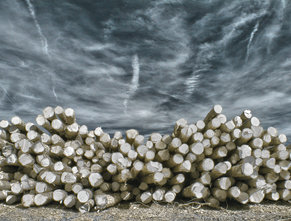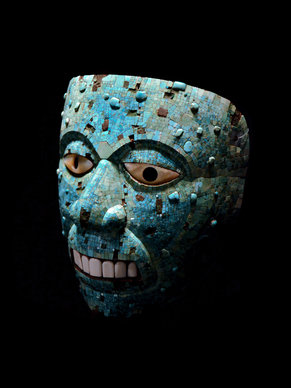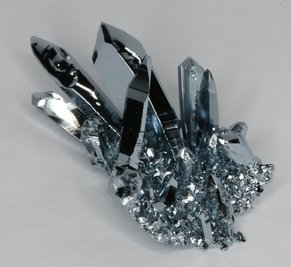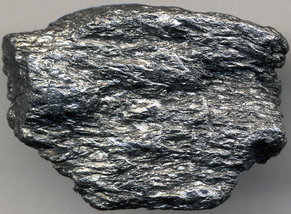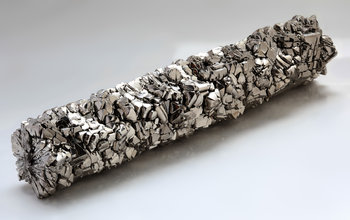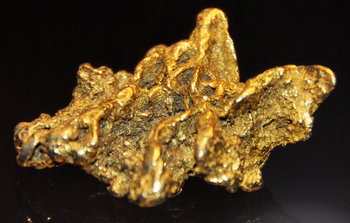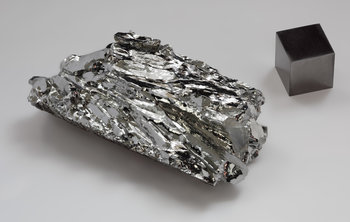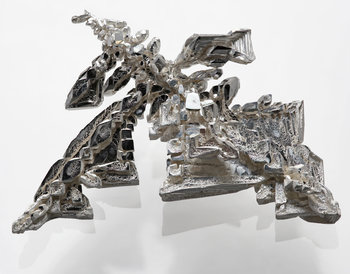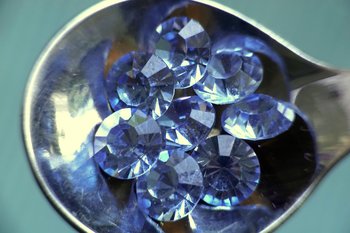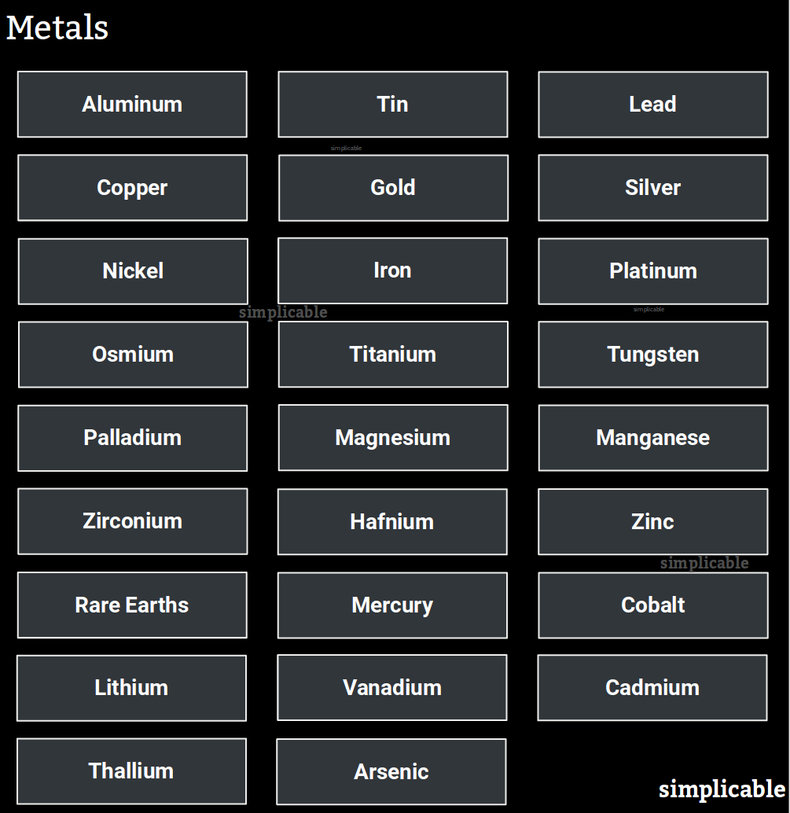
Aluminum
Aluminum is the third most abundant element making up about 8% of the Earth's crust. It is a silver color, soft, ductile, low-density and nonmagnetic. It is often combined into alloys that are strong, light and corrosion resistant.Tin
Tin is a silver to grey metal that is malleable and resist to oxidization. It was used by ancient civilizations and is best known by its alloys such as bronze and pewter. Tin is used to plate steel to make it rust resist. This type of composite steel is used in the food packaging commonly known as tin cans.Lead
Lead is a dense heavy metal with a low melting point. It is a silver color with a blue tinge and tarnishes to a dull gray. Lead was produced at scale by Ancient Rome with global production declining dramatically with the fall of Rome and not recovering until the industrial revolution. The industrial revolution brought new uses for lead and it was used in plumbing and paint. Lead is a neurotoxin and this had been known for centuries as plumbers and painters were historically known to get sick from working with lead. By the 1870s, the United Kingdom had laws governing workplace exposure to lead. Several nations banned lead paint for interior use in the 1930s. Nevertheless, lead continued to be added to new products such as leaded gasoline such that lead became a common air pollutant. A 1976–1980 study showed that 77.8% of the population of the United States had elevated blood lead levels. Lead exposure is known to reduce IQ, particularly when exposed to lead as a child. Many nations are now in the process of reducing the use of lead that enters the water and air. Lead poisoning is still a significant health problem on a global basis.Copper
Copper is a soft metal with very high conductivity of electricity and heat. It has a distinctive reddish-orange color and is also known for its green color when oxidized. Copper has broad industrial applications due to its electrical properties and is used in many alloys including brass, bronze and sterling silver.Gold
Gold is a heavy, dense, soft metal that is relatively rare. It is non-reactive and occurs naturally as solid nuggets and grains. Gold is a precious metal that has been used since antiquity as a currency and in high value items such as jewelry. Gold plays a financial role as an investment and was used to back major currencies until the 1970s.Silver
Silver is a precious metal known for its distinctive lustrous color. It has the highest electrical conductivity, thermal conductivity and reflectivity of any metal. As such, it has numerous industrial uses and is commonly used in electronics. It is also a popular metal for jewellery and coinage and plays a role as an investment metal.Nickel
Nickel is a silvery-white metal that is valued for its hardness and corrosion-resistance. It is mostly used in alloys, particularly stainless steel. Nickel is also used in its pure form as a plating for other metals to make them corrosion-resistant.Iron
Iron is the forth most common element in the Earth's crust. Pure iron is soft but impurities such as carbon make it hard. Iron is a historically common metal that was used by ancient civilizations. However, copper based metals such as Bronze were in widespread use earlier due to copper's low melting point. Iron is known for its exposure to oxidation such that it can quickly turn to rust. As such, surviving iron artifacts of ancient history are relatively rare. Iron is one of the most commonly used modern metals in the form of steel. Steel is essentially iron that has been purified to reach a desirable level of impurities such as carbon. Steel is also mixed with other metals to produce alloys such as stainless steel.Platinum
Platinum is a precious metal that is dense, malleable and highly nonreactive. It is rare with only a few hundred tonnes produced each year. As such, it is considered an investment metal. Historically, there have been instances of platinum prices exceeding gold prices. Platinum is commonly used in jewelry and has numerous industrial applications.Osmium
Osmium is amongst the rarest elements on earth. It is also the densest known element at 22.59 g/cm3. Used almost exclusively in alloys, mostly platinum alloys, to improve durability and hardness.Titanium
Titanium is a silver color, strong, low density metal that is corrosion resistant in sea water and when exposed to various chemicals such as chlorine. An oxide of titanium, titanium dioxide is used as a white pigment and food coloring. Titanium is also used in strong, lightweight alloys in combination with iron, aluminum and other elements. Such alloys are used in high value items such as jet engines, medical devices, mobile phones and industrial equipment.Tungsten
Tungsten is a rare metal with remarkable properties such as the highest melting point of any known element at 6192 °F. Its density is slightly lower than gold. It is often used for high heat applications such as light bulb filaments, welding tools and radiation shielding. An alloy of tungsten, tungsten carbide is one of the hardest known materials and is used in tools such as saws.Palladium
Palladium is an element in the platinum group of metals. It is a relatively rare metal that has many industrial applications. Most palladium produced is currently used in catalytic converters in gasoline burning vehicles.Magnesium
Magnesium is the 8th most abundant element on Earth with large amounts in the Earth's crust and dissolved in sea water. It is less dense than aluminum and is often used to make alloys that are light and strong.Manganese
Manganese is a hard, light and abundant metal that is used in steel making, glass production and as an aluminum alloy that is commonly used to make beverage cans. Manganese is a required trace element for all living organisms but is a neurotoxin in larger quantities. Oxides of manganese are commonly used as pigments. Some of the earliest known pigments are manganese oxides including pigments used in prehistoric cave paintings.Zirconium
Zirconium was known to ancient civilizations as the mineral zircon that contains zirconium. It was not identified as an element until 1789. Zirconium is used to improve the resistance of materials to decomposition by heat, pressure or chemical exposure. A crystalline form of zirconium dioxide, known as cubic zirconia has similar properties to diamonds.Hafnium
Hafnium is a lustrous, silver, ductile metal that is corrosion-resistant. It is a component of a number of alloys and has industrial uses in the manufacture of filaments, electrodes and semiconductors.Zinc
Zinc is a bluish-white metal that is a little less dense that iron. It was used in the alloy bronze as early as the 7th century BC. The biggest modern use of zinc is as a coating for steel or iron by a process known as galvanization designed to prevent corrosion. The zinc corrodes before the iron and leaves behind a protective layer of oxide and carbonate. Zinc is also used in alloys such as brass and bronze and in batteries. Zinc is an essential mineral for human health.Rare Earths
Rare-earth metals are a collection of 17 elements namely cerium, dysprosium, erbium, europium, gadolinium, holmium, lanthanum, lutetium, neodymium, praseodymium, promethium, samarium, scandium, terbium, thulium, ytterbium and yttrium. Despite their name, most of these elements are reasonably abundant in the Earth's crust but are difficult to mine as their are few known concentrated deposits. Each of these elements has numerous commercial uses in areas such as performance magnets, catalysts, alloys, glass and electronics. They are also added to fertilizers and animal feed. Most, except scandium, are heavier than iron.Mercury
Mercury is the only metallic element that is a liquid at room temperature. It is historically used in a wide range of products and applications including thermometers, fluorescent lighting and dental fillings. Many nations are making efforts to phase out certain uses of mercury because it is extremely toxic to life. Mercury commonly ends up in the air, water and soil as pollution and accumulates in the food chain. Combustion of coal is a major source of mercury in the environment. Japan experienced several large scale health emergencies due to mercury poisoning in the 1950s and 1960s from industrial pollution that resulted in 2,265 officially recognized victims of severe mercury poisoning with symptoms such as muscle weakness, damage to vision, hearing and speech, insanity, paralysis and coma. Of these victims, 1,784 died as a result of the poisoning or related diseases.Cobalt
Cobalt is a metal that is commonly used in magnetic, durable and high strength alloys. It is also used in batteries and a variety of industrial applications. Cobalt has been used since the Bronze Age as a blue pigment for pottery. Cobalt based compounds are still a common blue pigment today for glass, ceramics and paint. Cobalt is essential to life as a trace mineral. For example, cobalt is found in the structure of vitamin B12. In great enough quantities, cobalt is poisonous.Lithium
Lithium is a highly reactive and flammable metal that is the lightest metal and lightest solid element. It is used in batteries, heat resistant ceramics and alloys.Vanadium
Vanadium is a ductile, silver-blue metal that is harder than most metals without being anywhere near as hard as the hardest metals. It is a reasonably common element that is found in 65 different minerals. Most vanadium produced is used as a steel additive as it greatly hardens the metal. Vanadium is used to make high-speed tool steels that are used in premium items such as tools, sporting goods and surgical instruments.Cadmium
Cadmium is a bluish-white metal is that is chemically similar to mercury. It is toxic to a level that is comparable to mercury, lead and arsenic. These four metals are often termed toxic heavy metals along with manganese, chromium, cobalt, nickel, copper, zinc, selenium, silver, antimony and thallium. Cadmium is used in electric batteries, coatings and electroplating. It is also commonly used as a pigment including yellows, oranges and reds. The compound cadmium telluride is also used in certain varieties of solar panels. As with mercury, cadmium pollution historically caused a mass poisoning in Japan known as Itai-itai Disease characterized by softening of the bones and kidney failure.Thallium
Thallium is a silvery white metal that is not found in its free form in nature. It is mostly used to produce electronics with some use by the pharmaceutical industry and in glass manufacturing. Historically, thallium sulfate was sold as a odorless and tasteless rat poison and insecticide. This is now banned in many nations as this poison is nonselective. Historically, thallium sulfate was used in a number of infamous murders and was nicknamed "inheritance powder" along with arsenic.Arsenic
An extremely toxic metal used in the production of pesticides, treated wood products, herbicides and insecticides.Notes
The metals above are all elements of the periodic table. Not all metals on the periodic table are listed above.An alloy is a combination of metals or a metal combined with a non-metal element.In physics, metals are defined as a substance that can conduct electricity at a temperature of absolute zero. The classification of metals is surprisingly ambiguous as some substances act like metals in one state or condition but not others.| Overview: Metal | ||
Type | ||
Definition | Materials that conduct electricity and heat relatively well. | |
Related Concepts | ||

